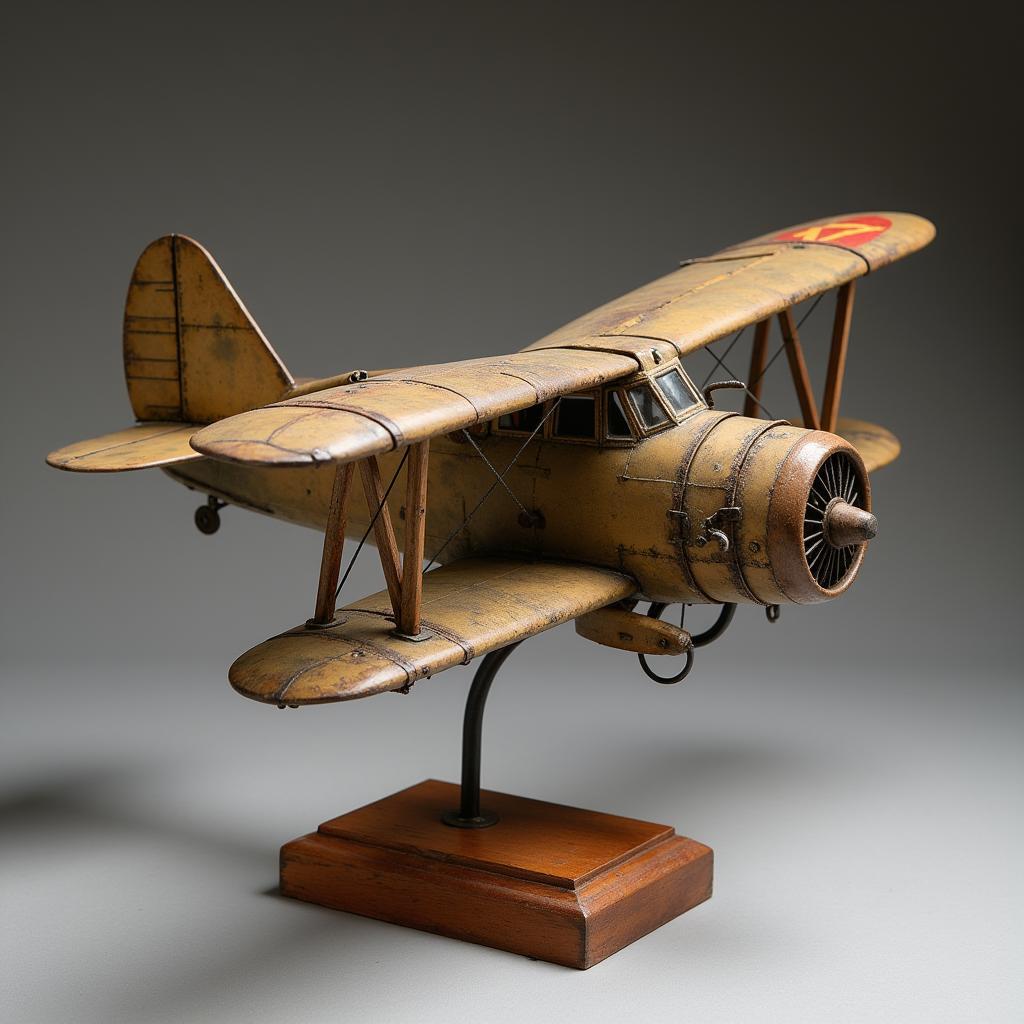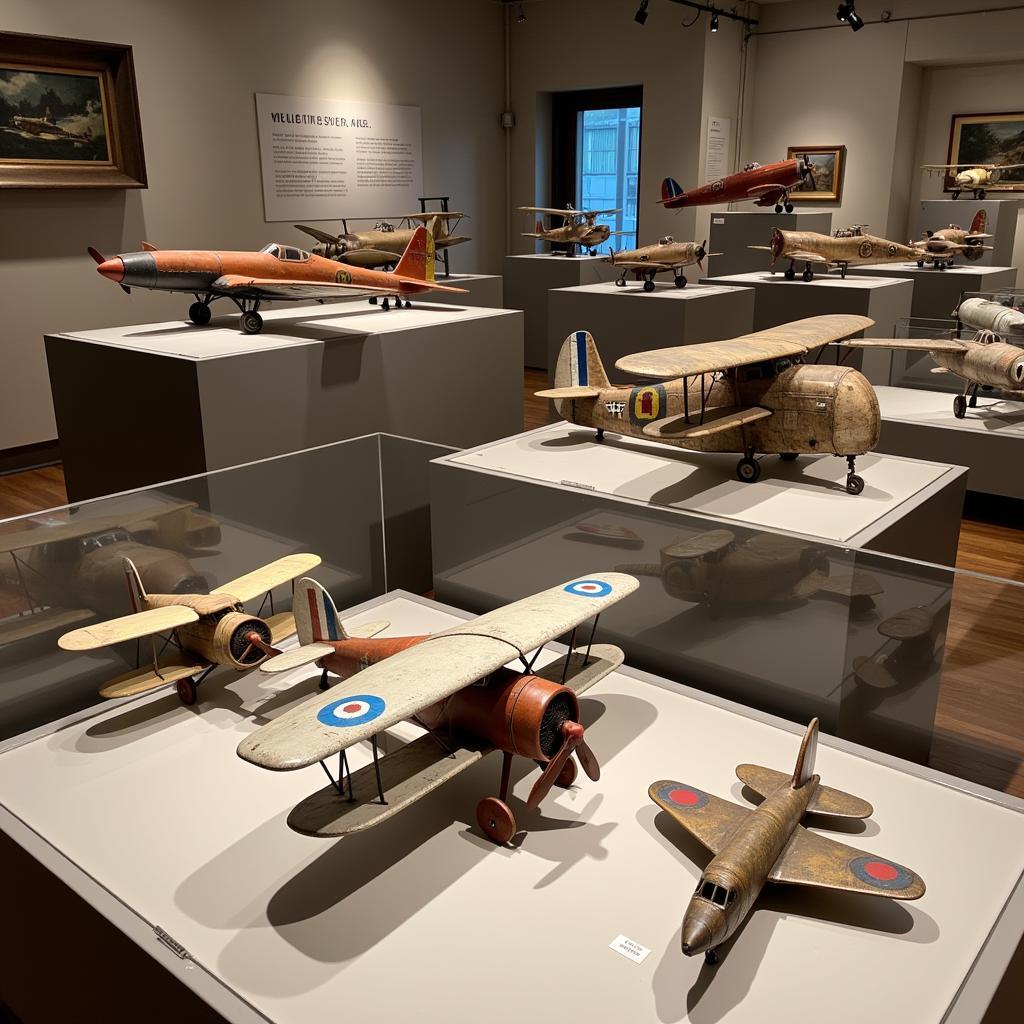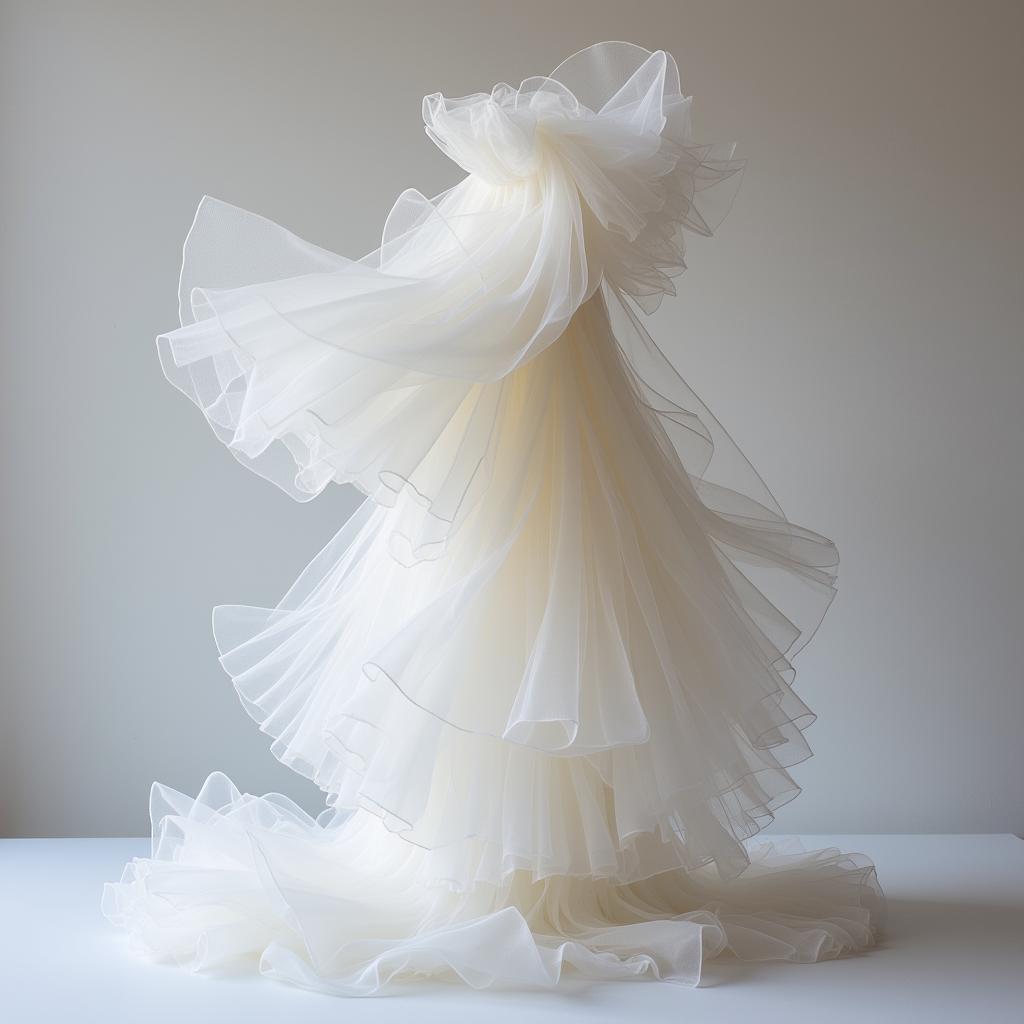Trench Art Airplane: A Window into History’s Workshop
Crafted amidst the chaos of war, Trench Art Airplanes offer a poignant glimpse into the lives of soldiers during World War I. More than just souvenirs, these intricate objects fashioned from spent artillery shells, bullets, and other battlefield remnants speak volumes about resilience, camaraderie, and the enduring human spirit.
 Trench Art Airplane Model from WWI
Trench Art Airplane Model from WWI
The Origins of Trench Art Airplanes
The emergence of aviation in World War I had a profound impact on warfare, capturing the imagination of those on the ground and in the air. As aerial combat intensified, so too did the desire to commemorate these technological marvels. Soldiers, often faced with long stretches of downtime between battles, turned to crafting intricate models of the aircraft that soared above them. Utilizing whatever materials they could scavenge from the trenches – shell casings, bullet heads, copper wire – they painstakingly assembled miniature airplanes, transforming instruments of war into symbols of hope and ingenuity.
More Than Just Models: The Symbolism of Trench Art
While the airplanes themselves are captivating, their true value lies in what they represent. Each piece is a testament to the creativity and craftsmanship of the soldiers who made them, reflecting their longing for home, their camaraderie in the face of adversity, and their unwavering hope for peace.
 WWI Soldier Creating Trench Art in the Trenches
WWI Soldier Creating Trench Art in the Trenches
For the families of those who served, trench art airplanes became treasured heirlooms, tangible reminders of the sacrifices made and the resilience displayed by loved ones. Today, these objects serve as powerful reminders of the human cost of war and the importance of peace.
Identifying and Collecting Trench Art Airplanes
Trench art airplanes are highly sought after by collectors and history enthusiasts alike. Due to their handmade nature, each piece is unique, bearing the distinct mark of its creator. When evaluating trench art, consider the following:
- Materials: Look for authentic materials such as brass shell casings, bullets, and copper wire.
- Craftsmanship: Intricate details, such as propellers that spin and wings crafted from thin sheets of metal, indicate a higher level of skill.
- Provenance: Knowing the history of a piece, such as the soldier who made it or the battlefront it came from, can significantly increase its historical value.
Preserving a Piece of History
Caring for trench art airplanes requires a delicate touch. Avoid using harsh chemicals or abrasive cleaners as these can damage the delicate materials. Store your collection in a cool, dry place away from direct sunlight to prevent tarnishing and fading.
 A Collection of Trench Art Airplanes in a Museum Display Case
A Collection of Trench Art Airplanes in a Museum Display Case
Trench art airplanes are not just artifacts of war; they are testaments to the human spirit’s ability to find beauty and meaning even in the darkest of times. By preserving these objects and sharing their stories, we ensure that the sacrifices and resilience of those who served in World War I will never be forgotten.


